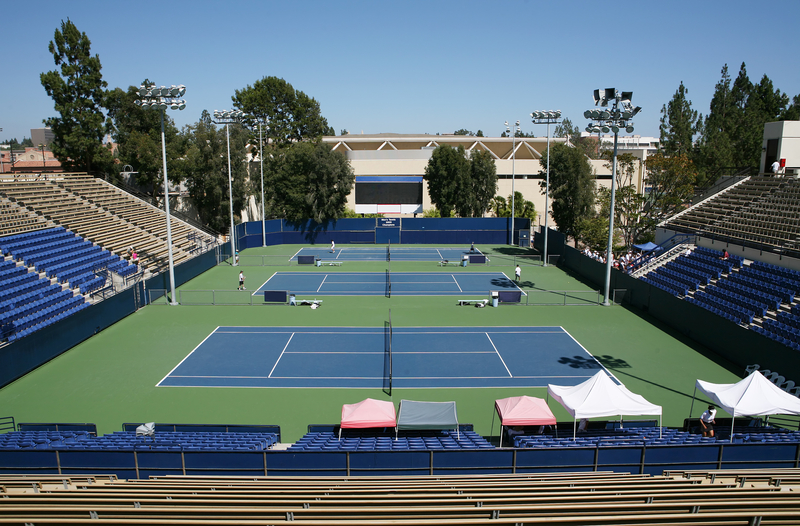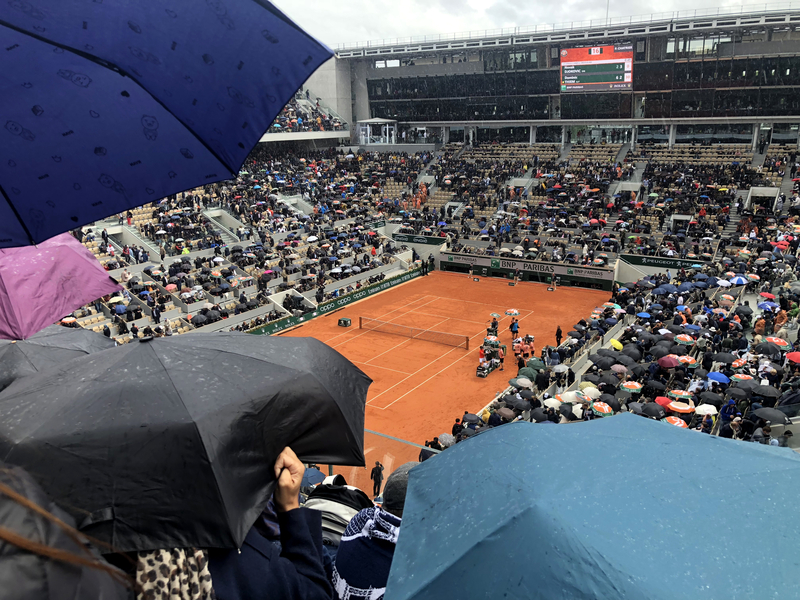Last updated on July 19th, 2022 at 01:46 pm
In any sport, the game’s object is to challenge a player and put on a performance. Tennis has several different types of tennis courts in an attempt to challenge a player at each court and force them to think and act differently. Players will have to change each time, and it’s often entertaining to the audience of a match to watch players change and evolve depending on which court they are using.
So, what are the four main types of tennis courts that professionals play tennis on regularly? What is the deal with the carpet court in the game of tennis? Do different types of tennis courts play differently from each other? Are all tennis courts the same size?
Below we will go into greater detail about the different types of tennis courts and what makes them unique.
What are the Four Main Types of Tennis Courts?
The four types of tennis court surfaces are grass courts, clay courts, hard courts, and artificial grass courts. In addition, there is another type of court called the carpet court, but these courts have not been used on an ATP court since 2009, in favor of promoting hard courts in indoor courts, and the WTA has used carpet courts sparingly but not since 2018. However, the ATP Challenger and the ITF still occasionally use carpet courts.
What are the Differences Between Tennis Courts?
Each tennis court is different from the other for a variety of reasons. For example, some can promote faster ball speed; others are more vulnerable to weather conditions. In addition, each tennis court surface has a uniqueness that distinguishes it from the others.
Below is what makes each tennis court unique and different from the others.
Grass Court
A grass court is one of the least commonly used courts because of the high maintenance required. However, Wimbledon is the only grand slam to have a grass court. What makes them different from other courts is the shortcut grass that makes them the fastest court on the circuit and, in concurrence, allows for lower ball bounces and short rallies.
It’s primarily a good court for players who have a big serve because, on these courts, the balls are harder to return.
Clay Court
Today, a clay court is only found at the French Open but can come in two different versions: a red clay court and a green clay court. Clay courts are notorious for having the slowest speed of the ball, but thanks to this slow speed when serving a ball with topspin, it makes for more straightforward returns. In addition, with the slow pace of the ball, most points will last longer than usual, which gives baseline players an advantage.
Hard Court
The US Open and the Australian Open are the best-known hard courts on the circuit. You will most likely run across these courts outside the Grand Slam tournaments. Hard courts have an acrylic surface which is essential for helping give an extra layer of comfort. On these courts, balls bounce higher and move faster, so players will have to always be on their toes when dealing with this court.
Artificial Grass Court
Artificial grass courts have a low maintenance cost while at the same time having the feel of a standard grass court. In addition, its sand-filled topping protects this court from weather conditions and can often dry quickly. Although not used on any Grand Slam tournament court, it is a good surface for beginner players as the spin is consistent, and the ball remains low on this type of court.
Are All Tennis Courts the Same Size?
Tennis courts could have minor length differences, but all ATP and ITF sanctioned events are roughly the exact sizes.
Do Different Tennis Courts Play Differently from Others?
One of the main things that make a tennis court unique is how a tennis player can perform on each because they play differently and require a different style of play to succeed. In addition, a tennis court can easily affect a ball’s speed and spin, affecting the player’s ability to navigate back and forth.
For instance, as mentioned earlier, on a grass tennis court, you should expect the ball to bounce faster and lower compared to a clay tennis court, where a ball will bounce slower and higher. With these different ball speeds, high bounce, low bounce, and some courts being more vulnerable to the weather, players will always have to readjust their playing style to match the different court surfaces.
What Tennis Players Thrive on Different Courts?
As the intro mentions, some players can thrive on one court and be inefficient on others. For example, Rafael Nadal is considered the “King of Clay, “and Roger Federer is “unbeatable on grass, “but they do not retain these titles on any other court. However, they have managed to better adapt to the playing style necessary to play on clay courts and grass courts.
In 2015, Serena Williams declared that clay was her favorite surface to play tennis on.
Conclusion: Why Are There Different Types of Tennis Courts?
Tennis is a sport unlike any other, where there are four different types of courts players have to play. Each throw in its own set of obstacles, possessing characteristics that can make them challenging for some players but not others. The unknown about how a player will perform is often the main attraction of watching tennis. It can also help put everyone in the position to win a match.
A player can always win against the number one ranked player in the league if that player does not do well on a hard tennis court, and the opponent can take advantage of their shortcoming. Different tennis courts keep the game interesting and keep everyone, including the crowd, on their toes as to what will come next.
Similar Posts:
What is a Drop Shot in Tennis?
What is a Grand Slam in Tennis?
How Much Do Tennis Players Make?
What Does Game, Set, and Match Mean in Tennis?
Greg Kristan, owner of The Stadium Reviews, LLC and TM Blast, LLC, brings his extensive experience visiting over half of the MLB ballparks, along with numerous MLS, NHL, NBA, and NFL venues, to provide in-depth coverage on the bag policy, food options, and parking. He has also been interviewed about his experiences on several sports podcasts.











